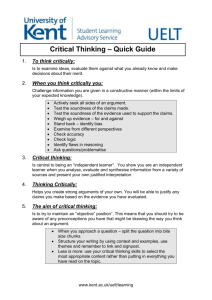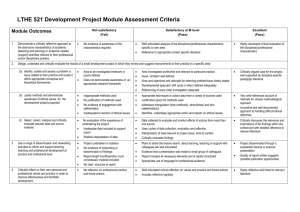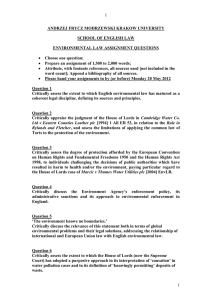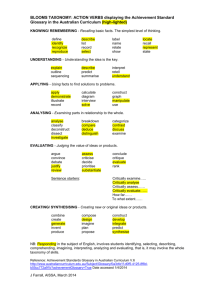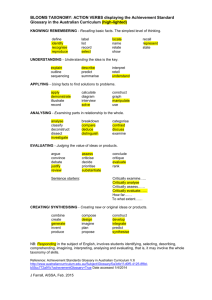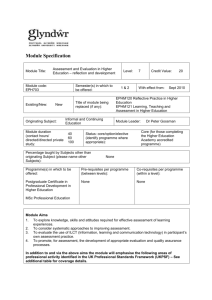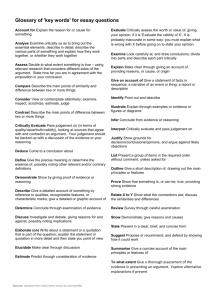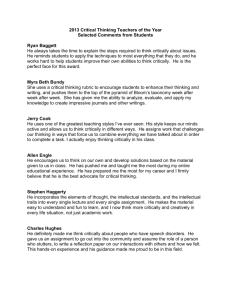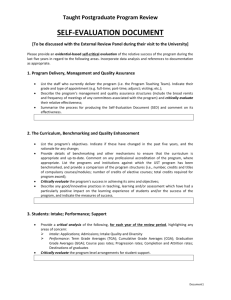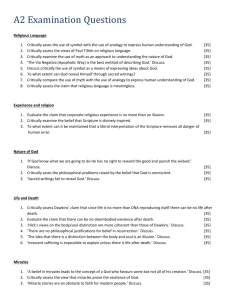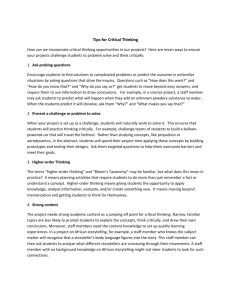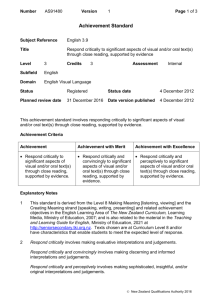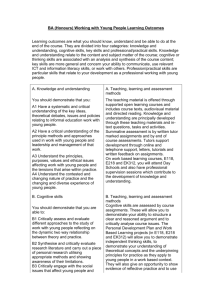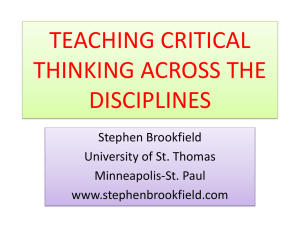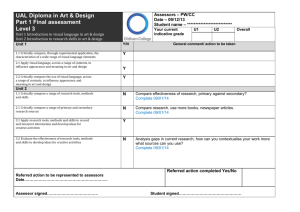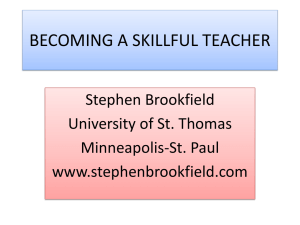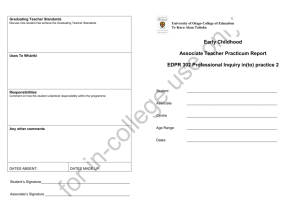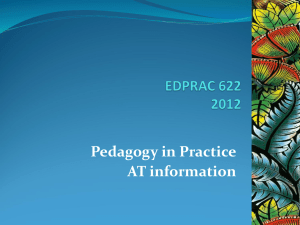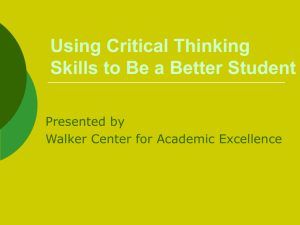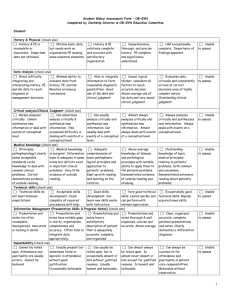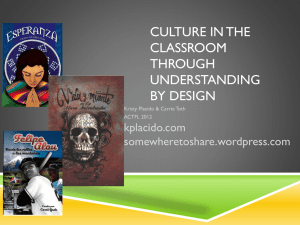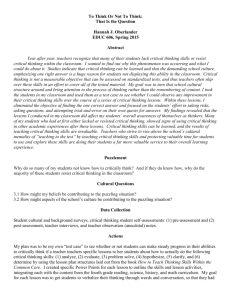becoming a critically reflective teacher
advertisement
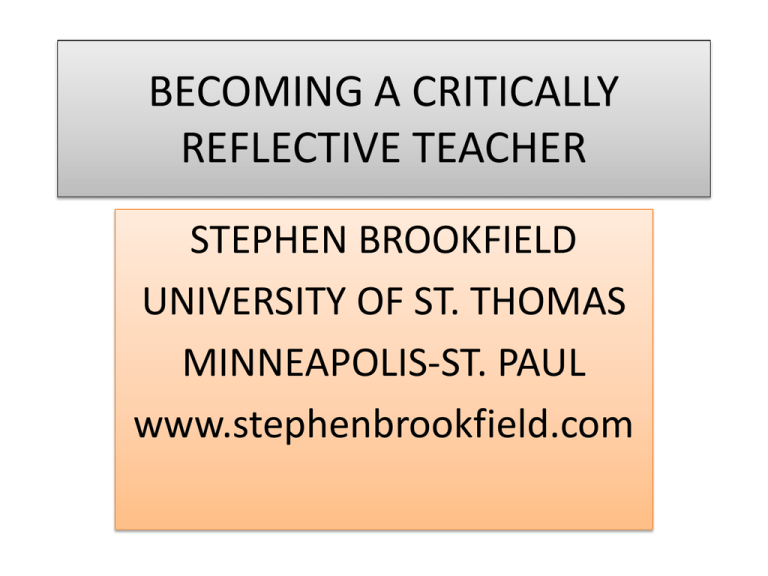
BECOMING A CRITICALLY REFLECTIVE TEACHER STEPHEN BROOKFIELD UNIVERSITY OF ST. THOMAS MINNEAPOLIS-ST. PAUL www.stephenbrookfield.com Best Teaching is Critically Reflective • Identifying & checking the assumptions that inform how we practice – how we assess learning, sequence curriculum, deal with specific classroom problems, decide how best to teach complex ideas & skills Types of Assumptions Causal – if I use this teaching approach it will engage students I learning / illustrate complex reasoning (e.g. Modeling critical thinking helps students learn to think critically Prescriptive – what a good teacher or class should involve (e.g. a good teacher uses a mixture of teaching approaches) Paradigmatic – structuring, framing assumptions we take for granted regarding the nature of teaching (e.g. teaching is a trajectory of improvement) How Do We Uncover & Check Assumptions • STUDENTS’ EYES • COLLEAGUES’ PERCEPTIONS • OUR AUTOBIOGRAPHIES AS LEARNERS • THEORY & RESEARCH Using the 4 lenses • Students’ Eyes – Classroom Assessment Approaches (CIQ, 1 Minute paper, Muddiest Point, learning Audit) • Colleagues’ Perceptions – team teaching, reciprocal peer evaluation, talking teaching groups • Autobiography as a Learner – learning something new / professional development • Theory/Research – cognitive development, racial & cultural traditions, building trust Most Important Knowledge We Need • • • • CRITICAL INCIDENT QUESTIONNAIRE Moment most engaged as a learner Moment most distanced as a learner Action anyone took that was most helpful • Action anyone took that was most puzzling • What surprised you most How the CIQ is Administered • Last 5 minutes of last class of week • Main themes reported out at start of 1st class of the following week • Talk about how data influence how you teach • ADVANTAGES • Illustrates learning diversity for students • Models critical thinking • Early warning device • NEGOTIATION NOT CAPITULATION What We Find – Different Worlds in the Same Classroom • • • • • Speechless Discussion Chalk Talk – Teacher writes a question in the center of the board Students come to board & post responses simultaneously Students draw lines to connect comments Teacher & students code clusters & questions Take photos, post online, springboard What We Find – Power is A Permanent Presence & Dynamic • How power moves around the classroom • When teacher power is abused or used ethically & responsibly • Assumptions of How Power Works: • Teacher as fly on the wall • Journals & mandated confessionals • Visiting groups What We Find - Hegemonic Assumptions • Ones we willingly embrace as being in our best interest – when in fact they are harming us ‘killing us softly’ Examples of Hegemonic Assumptions: • The Perfect 10 • Teaching as Vocation What We Find - Modeling • In Modeling Critical Reflection We Teach Critical Thinking • The Most Frequently Mentioned Aid to Thinking Critically is Seeing it Modeled Publicly & Explicitly By a Teacher • We Need to Earn the Right to Ask Students to Think Critically by First Taking the Risk to Think Critically Ourselves in Front of Them Some Modeling Ideas … • Speaking in Tongues • Structured Devil’s Advocacy • Ending Lectures & Discussions With Questions • Teacher Point-Counterpoint in Team Teaching • Assumptions Inventories • What Do YOU Think Professor? Consequences & Risks • • • • • Informed Actions as Teachers Improved Student Centered Teaching Broadened Teaching Repertoire Healthier Perspective – Ups & Downs Impostorship – I REALLY don’t know what I’m doing so I better keep quiet • Lost Innocence – I’ll never get it ‘right’ so I better keep it quiet RESOURCES • www.stephenbrookfield.com (Please Steal!) • BECOMING A CRITICALLY REFLECTIVE TEACHER 1995 • THE SKILLFUL TEACHER (2nd. Ed) 2006 • DISCUSSION AS A WAY OF TEACHING (2nd. Ed) 2005 • TEACHING FOR CRITICAL THINKING 2012 • All published by Jossey-Bass (San Francisco)
